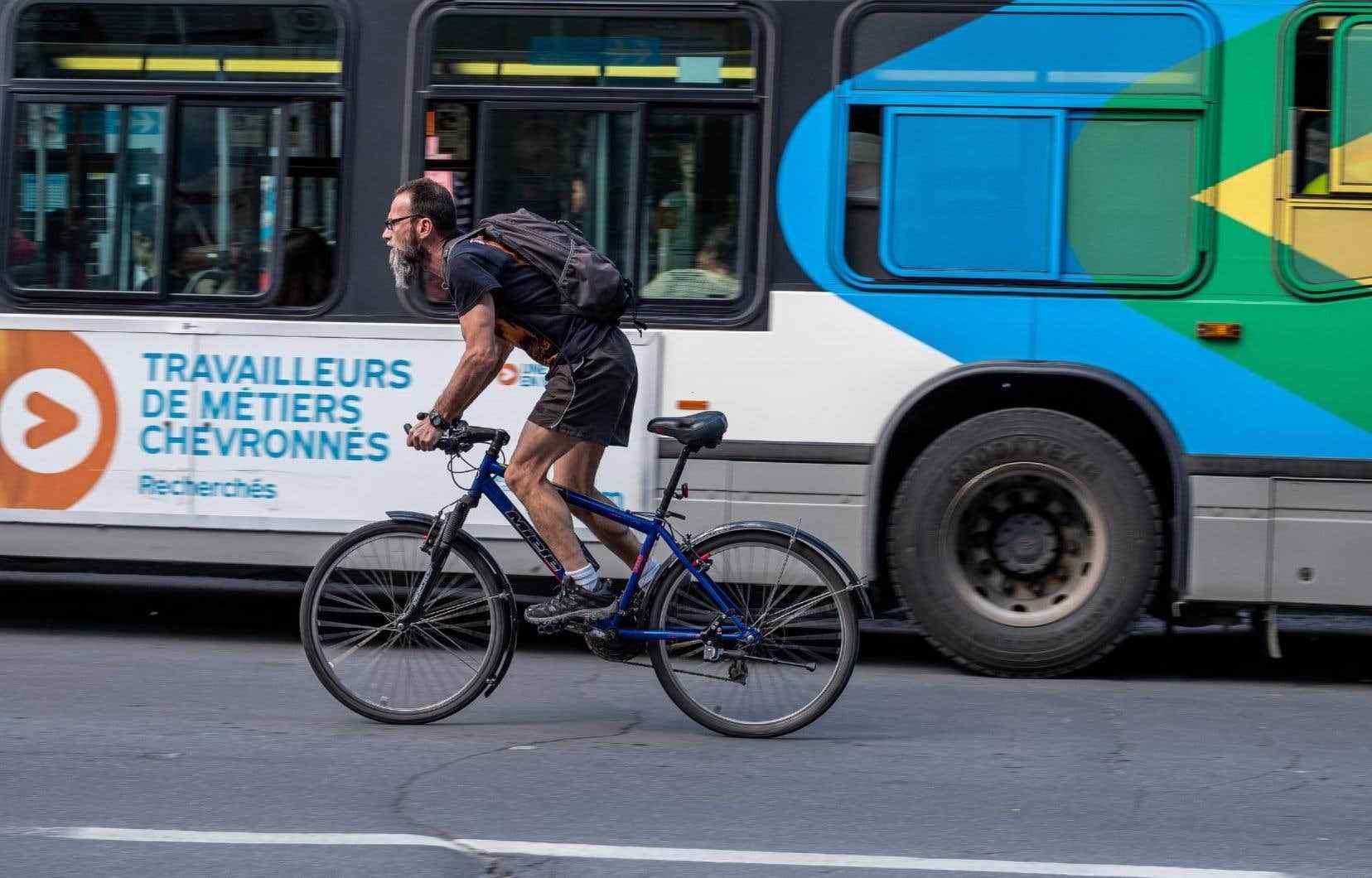This text is part of the special Environment section
The sustainable mobility revolution is already underway, but not everywhere, and not at the same speed. How to encourage people to take the train of change, and thus increase the attractiveness of walking, cycling and public transport? Several actors and observers of the environment are full of ideas, not so expensive and not so far-fetched.
First, let’s forget about one-size-fits-all solutions, because Quebec’s geography and demographics do not lend themselves to this. “We can’t do the same thing in Rimouski and Montreal, says Sarah V. Doyon, Executive Director of Trajectoire Québec, and let’s stop thinking that public transit is just 40-foot buses and metro lines. »
She cites as an example an initiative of the Régie intermunicipale de transport Gaspésie–Îles-de-la-Madeleine, which is the envy of many, and which offers a range of intercity routes and local services, with or without reservation. Its funding is based in part on a tax of one penny per liter of gasoline. Indisputable proof, according to her, “that it is possible to have public transit, no matter where you live”, whether the place is densely populated or not.
For many, the sinews of war remains money. According to the 2022-2023 Infrastructure Plan, the Government of Quebec provides 30.7 billion for the road network, compared to 13.4 for public transport.
Samuel Pagé-Plouffe, coordinator at TRANSIT, the Alliance for the financing of public transport in Quebec, considers that the Ministère des Transports should first respect one of the objectives of its sustainable mobility policy, namely increasing the supply service charge of 5% per year. “Spread over several years, it could double,” he says. And let’s not forget that before the pandemic, we were breaking historic records for public transit ridership. »
The best way to walk
The thing seems paradoxical, but the renewed popularity of the bus, the metro and the commuter train could go through… walking.
“It’s the best access to public transit,” says Catherine Morency, professor at Polytechnique Montréal and expert in transportation engineering. When we improve travel conditions, when we increase supply, then people no longer depend on a single mode of transport. The day when we will have the concern to build neighborhoods with local services, and not just residences, walking will become the number one mode of transport. Currently, in Quebec’s major cities, 50% of trips of less than one kilometer are made by motorized vehicle.
It could be different if the walk was done in a pleasant and safe environment. The planning of cities, suburbs and villages requires many trade-offs, but sometimes only a few centimeters change everything. Starting with the width of the sidewalks.
Sandrine Cabana-Degani, Executive Director of Piétons Québec, agrees with Catherine Morency regarding the positive impact of walking on public transport. “Many municipalities respect the Quebec standard of a width of 1.5 meters for the sidewalk; you can walk there alone, but not side by side, and it’s complicated with strollers or trolleys. With 1.8 meters, the feeling of security and comfort would be greater. »
And as long as the sidewalks are redone, the design of the intersections should also be reviewed. “According to the Société de l’assurance automobile du Québec, this is where the majority of serious and fatal collisions occur”, affirms the one who dreams of the day when we will no longer see pedestrians as people to whom we grant the privilege of being on the public highway.
Is it possible to walk to a commuter train station? Unless you live in a TOD (transit-oriented development), the thing seems illusory, but the trend could be reversed.
“Building stations solely around cars is no longer viable,” adds Marie Hélène Cloutier, executive director of customer engagement, partners and mobility innovation at Exo, the company responsible for public transit in the Montreal metropolitan area. They need to be turned into real mobility hubs with self-service bicycles, electric charging stations, car sharing, and connected lockers so that workers who are away from home during the day can have things delivered safely. In fact, the more these poles are diversified, the more they will facilitate not only transport, but the lives of citizens. »
Where is the car in all of this? “I am often asked about the profile of the traveler of the future,” says Catherine Morency. In my opinion, he will have running shoes, an OPUS card and a telephone! »
